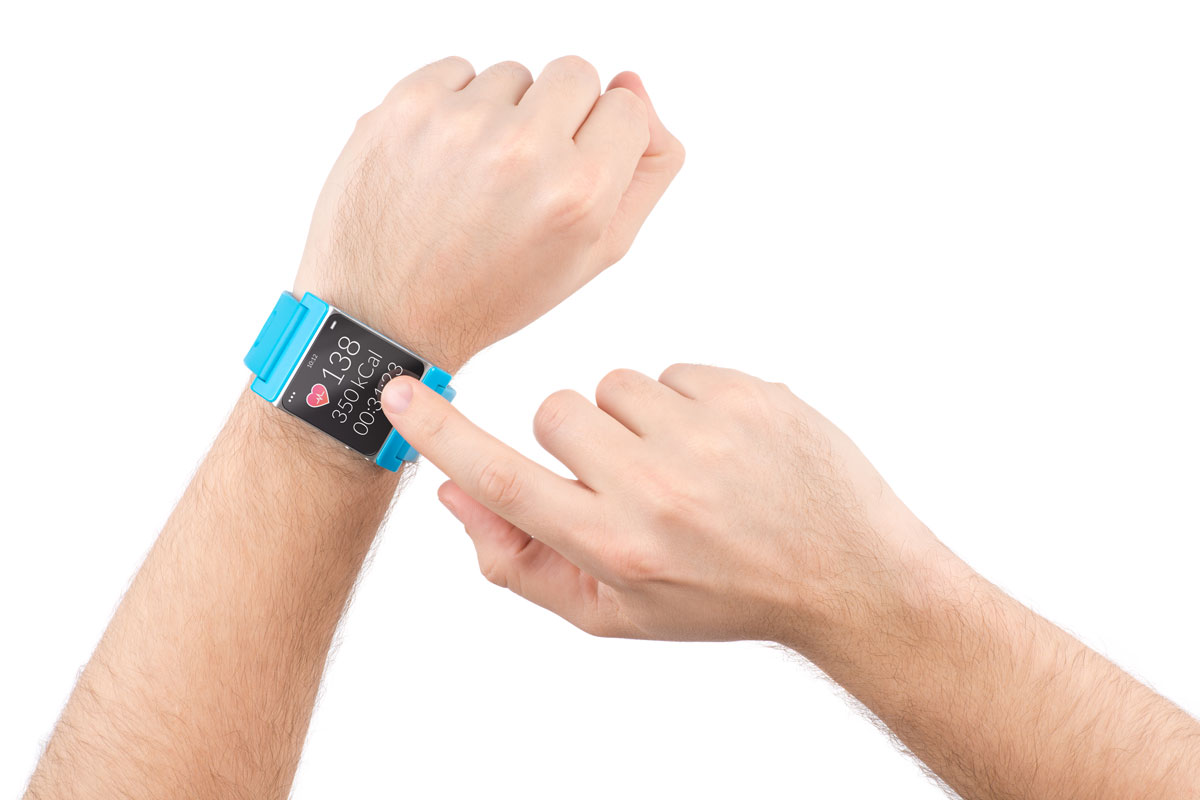In the world of wearables, you can never sacrifice ergonomics for improved functionality. Any hard edges, non-breathable material, or pressure points will soon show themselves to a user trying to incorporate your wearable into their daily life— it’s like itchy fabric on clothes or tough material on a shoe ultimately making them too uncomfortable to wear.
Wireless functionality needs to be considered early on in the design process, so you don’t risk compromising ergonomics by hastily adding it on later. Read on for 7 common challenges to keep in mind when integrating the wireless and ergonomic aspects of wearables:
1. Wearable design is all about the user
Wearables are all about offering users seamless access to wireless technology through everyday forms. If any feature of your design isn’t primarily justified by the user’s experience, your wearable will be compromised: small imperfections to accommodate wireless design can cause discomfort or reduce functional capability.
Keep your users needs at the front of your design process. Be aware of the range of wireless antennas available to you as a designer, from flexible antennas to ultra-thin surface mounted antennas, so that wireless functionality can be seamlessly integrated within your wearables’ ergonomics.
2. Wearable devices need to be small, thin and stylish
Wearables need to fit on your person as easily as a ring, watch, shirt, or pair of glasses would. If they are not as light or as small as their non-smart equivalents, your users will notice immediately. This can often be a problem for wireless functionality, as the discrete design of the rest of the product highlights the presence of any external antennas.
It is crucial that you are aware of how the materials of your wearable can integrate with different kinds of wireless antennas. Conductive lightweight metals can enhance the aesthetics and reduce the weight of your design, but they can have devastating wireless performance impacts.
Fortunately, there are a range of wireless solutions available for all kinds of wearable design. It is essential they are reviewed at the earliest stage possible in your design process.
3. Finding sufficient ground plane length
The importance of keeping wearables’ size down often means that ground planes can become an impossible luxury: there just isn’t enough flat surface space for them. As a result, wearables designers sometimes realise too late that many antennas just aren’t suitable for their context. If this is likely to be the case for your product, be aware of ground plane independent antennas.
Alternatives like Antenova’s flexiiANT family of antennas don’t need a ground plane yet still offer high efficiency even for low bands. Freeing yourself from the need for a ground plane can radically impact on other aspects of your product’s design, allowing more compact solutions. Being aware of this early on will make sure your end design makes the most of what’s available to it.
4. Wearables cannot be bulky or heavy
If weight and bulk were no issue in wearables, there would be little-to-no problem in their design: simply design your product and add in an antenna to it once that’s done. Unfortunately, this kind of approach fundamentally compromises the crucial feature of your wearable—its ergonomics.
As your customers won’t be expecting their wearables to come with bulky, pointy external antennas, you need to review possible wireless solutions. Consider the range of small, lightweight antennas available to your project early on, and think about how this will affect the materials you can ultimately use—at no point do you want to risk detuning wearables’ wireless transmissions.
5. Wearable form factor is determined by users
Even if you have found the right product housing, components and PCB architecture, your device still needs to fit the form factor your users will expect––in shape, size and feel.
Ultimately, however, the form factor of your device will be determined in the brief. This will influence the options you have with a wireless solution straight off the bat. If you consider your options as early as possible in the design process, you will have more time to identify the optimum solution.
6. Product housing in close vicinity to antennas
The beauty of wearables comes from how they efficiently use space, but this means components are packed in to maximise efficiency. This can pose a problem for wireless design, as metallic components, LCDs, batteries and more can prevent effective wireless transmissions. At its worse, this can affect wireless performance to such an extent that the final design doesn’t function.
Review how components will interact with your antennas transmission signals. With an embedded wireless solution, there will inevitably be some form of frequency shifting in the presence of metal parts. However, you can tune your antenna optimally by testing your design – or by consulting Antenova, as we provide free design support for all Antenova antennas.
7. Compacted circuit boards with metallic and magnetised components present
The nature of wearables can make it impossible to avoid metallic and magnetised components within the circuitry of the device. Unfortunately, these components become transistors when subject to RF signals.
Make sure you are prepared for how different antennas will respond to the other components on your circuit board. Flexible circuit boards may be a more suitable option, improving ergonomics while allowing for flexible sheltered antennas.
Making elegant and efficient wearables
Wireless performance is an essential part of wearable design: if they can’t connect, then they’re no more than a useless accessory. All too often, the implications on your wireless performance are considered too late – wireless solutions can be seen getting ‘shoehorned’ into wearables. Rarely, if ever, does this approach work.
If designers are aware of how ergonomics and wireless interrelate early on, innovative solutions utilising the sheer range of antennas can be sought out—elegance and efficiency of design will then spur each other on.




